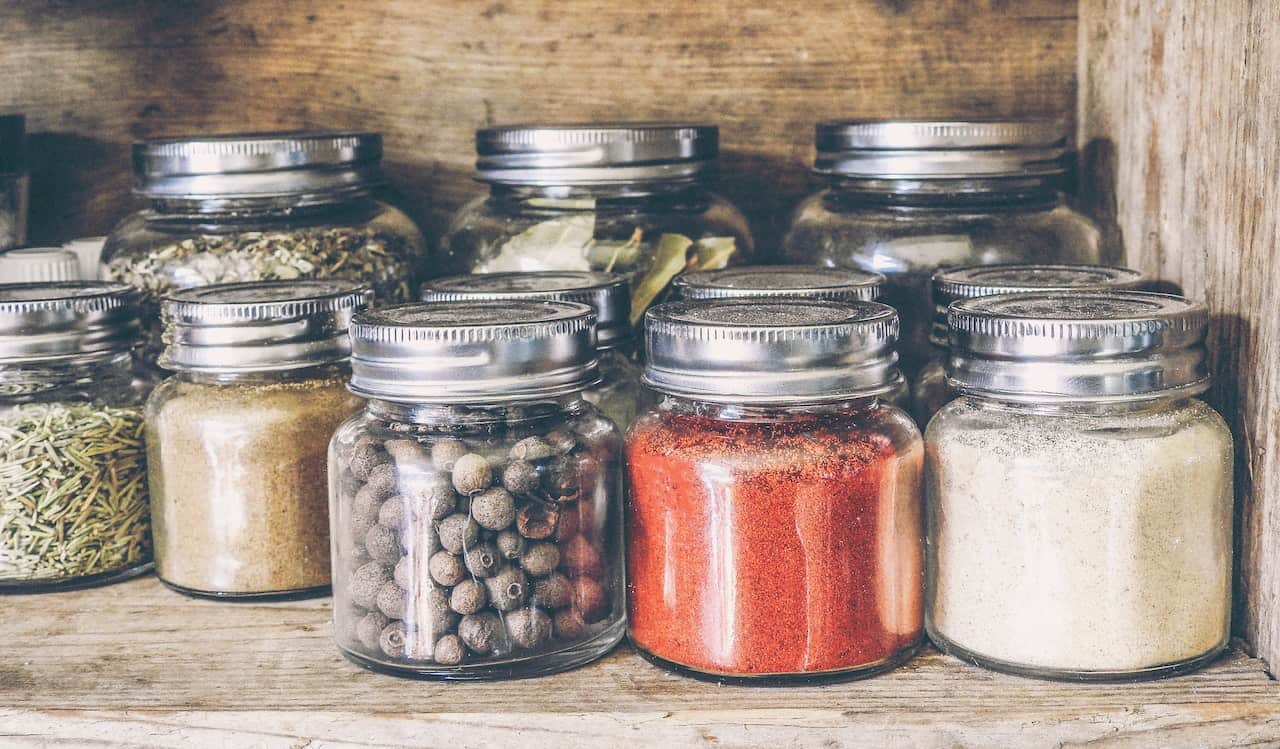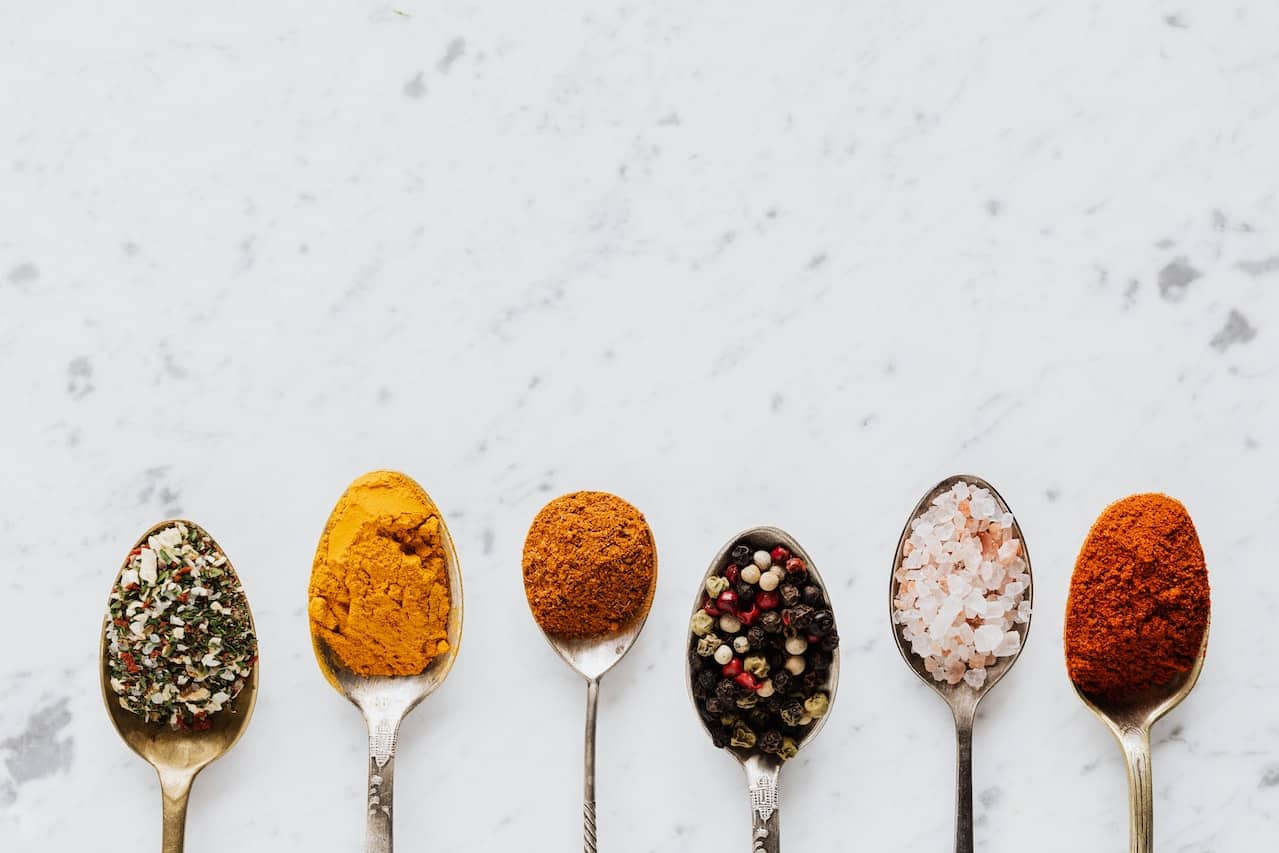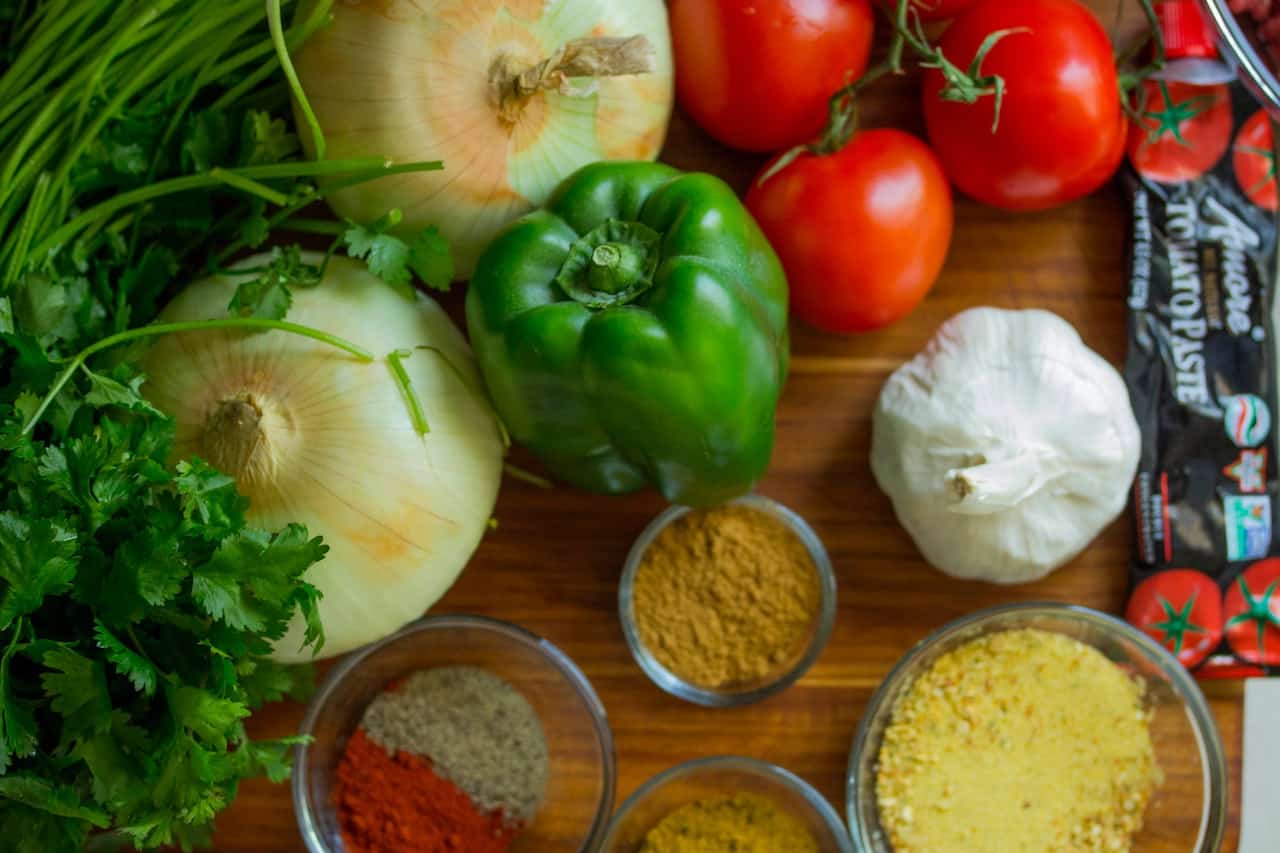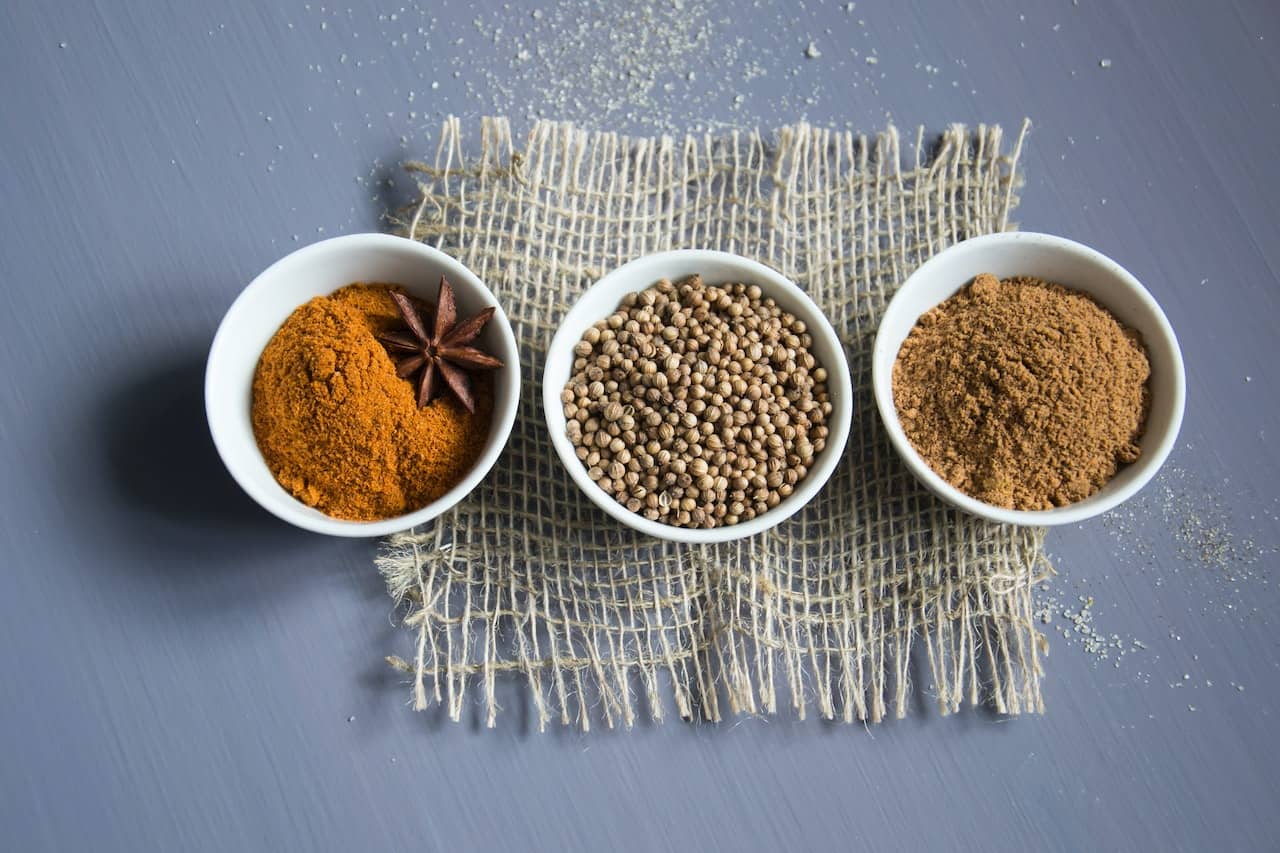The heart is the wellspring of life; it continuously pumps blood to your organs to maintain their functionality. The heart is a rather tough organ that performs effectively under normal circumstances. However, many individuals sometimes unknowingly disregard their heart health by skipping meals, exercising, and indulging in risky habits like smoking. While many variables are beyond your control, you may adjust or modify your eating habits to guarantee that your biological pump continues to function at its peak far into old age.
Adding spices to your regular meals may help to protect your heart while also adding a ton of taste. Let’s explore the world of heart-healthy spices.
What Are Spices?

The term “spice” in the culinary arts refers to any dried plant component, other than the leaves, used to season and flavor a dish but is not the primary ingredient. Why not use foliage? Because herbs are plants with green, leafy components are utilized in this manner.
A spice is any seed, fruit, root, wood, or other plant material used to flavor or color food. Herbs are unique from spices because they are plant leaves, flowers, or stems used as a flavoring or garnish. Spices are used in various applications, including food preparation, cosmetics, perfumes, and religious activities. Vanilla, for example, is often used in the manufacture of perfumes.
Aside from the green leafy component, the whole plant is considered a spice, containing dried bark, roots, fruits, seed, twig, and other parts. India is now the world’s greatest user, producer, and exporter of spices. To research spices, they even founded the Indian Institute of Spices Research.
History Of Spices
Spice has a long history that transcends the development of human civilization. It is a history of territories explored, empires established and overthrown, battles fought and lost, treaties made and broken, flavors sought and provided, and the emergence and decline of many religious practices and beliefs. In ancient and medieval eras, spices were traded among the most expensive commodities.
The ancient Egyptians used numerous spices for food flavoring, cosmetics, and embalming their dead as early as 3500 BC. The usage of spices expanded from the Middle East to the eastern Mediterranean and Europe. Donkey or camel caravans were originally used to deliver spices from China, Indonesia, India, and Ceylon by land. Before European explorers found a maritime route to India and other spice-producing nations in the East, Arab intermediaries dominated the spice trade for over 5000 years.
Differences and Similarities Between Spices and Herbs

Both herbs and spices are derived from plants; herbs are the fresh portion of the plant, while spices are the dried root, dry stalk, seed, or dried fruit of the plant and are nearly always dried rather than fresh. Herbs and spices provide flavor to a portion of food; herbs have a more subtle taste, while spices have a stronger flavor.
You may add a tiny bunch of basil to your pesto, but no more than a few peppercorns. When it comes to spices, less is frequently more. Herbs and spices may be combined; thus, you can use a mixture of two or more herbs or numerous spices. To build a flavor profile, you must first grasp each ingredient’s texture, flavor, fragrance, and taste. It is like painting, too many colors combined, and you get a murky brown. In cooking, herbs and spices layering are crucial.
The French have long cooked using a variety of herbs and spices. At the same time, Indian cuisine is famed for spice combinations like garam masala. In any situation, the goal is to obtain the correct combination so that no one herb or spice dominates the meal. While the spice combination is more potent, the bouquet garni is usually milder.
Top Spices For Heart Health

You probably know how important food and lifestyle are to maintaining good health and avoiding heart disease. But did you know that the spices in your kitchen cabinet may improve your general health and assist in treating, even preventing, heart problems in the future? A healthy heart requires specific nutrients in many spices, all of which are in large quantities.
These nutrients include chemicals that decrease “bad” cholesterol levels, cleanse arteries, Blood vessels and induce an anti-inflammatory reaction in the body. The key to living a better life is increasing blood flow, which is made possible because blood includes nutrients, proteins, enzymes, and oxygen that support your body’s ability to heal and restore itself. Here are the spices that make your heart healthy.
🫑Cayenne Pepper
Popular in Mexican, French, Caribbean and Asian cuisines, cayenne pepper is most often used as dried powder or flakes but is also sometimes used fresh. Cayenne is rated as a medium-hot pepper on the heat scale, hotter than a jalapeño but not as fiery as a habanero. Potassium, vitamin C, and capsaicin, which give cayenne pepper its spiciness and numerous health advantages, are among their ingredients.
Circulation is usually the first thing that springs to mind when considering cayenne’s cardiovascular health advantages. But how does it help with circulation? According to research, it might function in a variety of ways. Its components have been found in studies to reduce total cholesterol, cholesterol, and triglycerides while increasing HDL cholesterol.
Cayenne may increase endothelial function by boosting nitric oxide, which helps arteries relax or widen, improving circulation. In one investigation in guinea pigs, capsaicin reduced plaque development in artery walls – yeah, they were serving as guinea pigs.
Cayenne pepper also has powerful antioxidant and anti-inflammatory properties that aid the cardiovascular system. Obesity is a risk factor for cardiovascular disease. Cayenne pepper use may also aid with weight reduction. When administered to 80 overweight men and women, Capsinoids found in cayenne pepper were demonstrated to reduce body weight and fat mass.
It was more effective to eat the pepper than to take it in capsule form. The scientists found that preferred concentrations in actual foods, rather than dietary supplements, may be more beneficial for weight control.
🫑Cinnamon
Cinnamon is a spice derived from the inner bark of numerous Cinnamomum species of trees. Although cinnamon sticks are often seen in hot cider or mulled wines, cinnamon powder is commonly used in sweet and savory foods.
Cinnamon has a lengthy history dating back to 2,000 BC. Originally a rare spice fit for kings, it is today present in practically every American kitchen. Cinnamaldehyde, an oily component, is responsible for its characteristic scent and taste and many of its health advantages. Cinnamon, like cayenne pepper, has potent antioxidant and anti-inflammatory qualities that contribute to its heart-health advantages.
Although cinnamon is most well-known for its ability to decrease blood sugar, it may also help reduce the risk of heart disease in other ways since it may improve cholesterol and blood pressure levels. A half teaspoon of cinnamon daily for 40 days resulted in reductions in fasting blood sugar, triglycerides, cholesterol, and total cholesterol in a trial of men and women with type 2 diabetes.
There were no differences in the trial group that received a placebo. Another major research examining the results of ten double-blind investigations found comparable benefits on cholesterol levels, triglycerides, and fasting blood sugar. 6 Cinnamon has been demonstrated to reduce blood pressure.
🫑Cardamom
Cardamom is an Indian culinary staple that is hardly recognized or utilized in Western kitchens. It is spicy, mixes well with cloves and cinnamon, and lends a flavor to baked items and curries. It has the sweetness of cinnamon and the spiciness of spiced chai or pumpkin pies.
Though historically considered a festive autumn taste, feel free to use it in your dishes all year. Cardamom may be used to cure heart disease and digestive problems, as well as to combat flu and cold symptoms and to naturally refresh breath while safeguarding dental health.
🫑Ginger
Ginger was initially grown in Southeast Asia and eventually found its way to the West through the spice trade. This ginger species does not occur in the wild, but a distinct plant known as wild ginger does. The only other places you’ll find wild ginger are the Wild Ginger eateries scattered around the nation, including Seattle, WA, and Summerville, SC. All references to ginger in this article will be to the common spice ginger.
Although ginger root is used in savory meals in Indian and Asian cuisine, it is often used in sweet items in Western cuisine, such as gingerbread, ginger biscuits, ginger ale/ginger liquor, Moscow mules, and pecan pie. Although ginger root may be juiced, pickled, sliced, chopped, and candied, it is often used as a powder.
Gingerol, its main bioactive ingredient, is responsible for its taste and scent and many of its health advantages, which stem from its antioxidant and anti-inflammatory qualities. Although ginger is well recognized for its anti-nausea properties, the current study has looked at its impact in lowering risk factors connected with heart disease.
According to a review of research, ginger had superior outcomes when administered in 2-gram doses, with an average 38-point fall in triglycerides and a 12-point reduction in total cholesterol. One teaspoon is equal to two grams of ginger powder. Ginger has been shown in other research to lower fasting blood sugar and hemoglobin A1c levels in people with type 2 diabetes (a measure of long-term blood sugar control). Cholesterol, Triglycerides, and high blood sugar levels are all risk factors for heart disease.
🫑Cumin
Cumin enhances the flavor of all spices. The term “responsibility” refers to determining whether or not a person is responsible for his or her actions. In many spice combinations available at your local supermarket, a pinch goes a long way toward giving an aromatic touch. Studies have discovered that cumin aids digestion, is rich in Vitamins C, A, and E, and helps with respiratory difficulties. It goes well with chili, soup, tacos, and even eggs for breakfast.
🫑Turmeric
Turmeric (Curcuma longa) is native to tropical India and Southeast Asia and belongs to the same Zingiberaceae family as ginger. It’s particularly popular in Indian foods, including curries, tikka masala, and tandoori chicken. The root, like ginger, is the section utilized in cooking. Turmeric, which is most often available in powder form or as one of nine spices commonly included in curry powder, gives curry powder its golden yellow hue.
Many of the health advantages linked to Indian foods are related to curcuminoids in turmeric, which are predominantly connected with anti-inflammatory properties. Although there have been several research on the health benefits of separated curcumin, this page concentrates on regularly ingested spice food sources, namely the entire herb turmeric.
Aside from curcumin, turmeric has several antioxidant components that are not destroyed by cooking. Turmeric has also been studied for its potential to reduce the risk of heart disease. One research discovered that taking 2.4 grams of turmeric for four weeks lowered LDL cholesterol and C-reactive protein (a marker of inflammation associated with increased risk for heart disease).
🫑Garlic
Garlic (Allium sativum) is a plant grown all over the globe, although it is said to have originated in Siberia. The garlic bulb is used in cooking as whole cloves, chopped/minced, pressed/pasted, juiced, or powdered.
Garlic is one of the most often used and investigated culinary spices. Garlic contains about 100 phytochemicals, the most well-known of which is the sulfur-containing compound allicin. Allicin and other sulfur compounds are also present in garlic cousins, such as onions and leeks. These sulfur compounds are generated when the garlic clove is destroyed, such as by chopping, crushing, or chewing.
Allicin and other sulfur compounds are responsible for garlic’s strong flavor and many health benefits. Do you see a pattern? The greatest health-promoting components of these meals seem to be the nutrients that give them distinct flavors and fragrances. It should come as no surprise that garlic benefits your health, particularly your heart and circulation (unless, of course, you are allergic to it).
Several studies have revealed that garlic reduces blood pressure and inhibits free radical damage in high blood pressure patients’ blood vessels. Garlic has been shown in several trials to reduce blood lipid levels, notably total and LDL cholesterol. Although one research concluded that the equivalent of one garlic clove was insufficient to make an impact, others claim that four garlic cloves daily do. Another research discovered garlic was more effective when coupled with a spoonful of lemon juice.
In that study, 20 grams of garlic (the equivalent of 2 to 4 cloves) were ingested. A review of studies indicated that eating garlic for two months reduced total cholesterol by an average of 17 points and LDL cholesterol by an average of 9 points in those with total cholesterol levels of 200 mg or higher. According to the results of this study, garlic had minimal impact on triglyceride and conflicting effects on cholesterol.
Onions
🫑Onions
Onions contain potent flavonoids, including quercetin and alkenyl cysteine sulfoxides, which are attributed with considerable antioxidative, and antibacterial. To enjoy raw onion without having to deal with its overpowering taste, marinate sliced red or white onion in apple cider vinegar overnight. For heart health benefits, consume half to one raw onion daily.
🫑Maca
This potent adaptogen, cultivated high in Peruvian Andes, has recently gained popularity. It is a cruciferous vegetable similar to broccoli and cauliflower. Don’t be put off by its odorous relatives; the root is the sole edible portion of the plant and is often taken in powder form. According to some research, Maca may improve brain function and memory, physical performance, and muscular repair. It boasts a malty taste that goes well in smoothies or gives character to your overnight oats.
🫑Mustard Seeds
Mustard seeds are high in minerals such as vitamins A, B6, potassium, and magnesium and are also high in omega three fatty acids, which help to prevent heart disease. According to research published by the American Journal of Clinical Nutrition, incorporating mustard oil in your normal cooking might be wonderful for good heart health.
Spices Used in the Healthiest Ways

You can obtain the same benefits whether you use fresh or dried spices. I’m sure you’ve heard about it.
Suppose you’re tempted to take supplements to raise your intake of these beneficial substances. In that case, it’s crucial to realize that commercial supplements aren’t properly regulated, which means you can’t be certain what the pills truly contain. Certain third-party organizations conduct testing to ensure the quality and substance of supplements. If you’re considering taking a supplement, speak to your doctor or a nutritionist about the best form and dosage for you.
Regardless of the other health advantages, spices give taste to food and may make healthy meals appealing, and are a good approach to pull you out of an eating rut. Enjoying your meals is crucial to keeping good habits for the long run. Be cautious about consulting your doctor or a dietician before altering your diet.
Frequently Asked Questions
🗨Are spices helpful to heart patients?
According to two recent studies, ingesting herbs and spices might promote improved cardiovascular health. One research indicated that adding herbs and spices to meals may help decrease blood pressure in those at risk of heart disease.
🗨What spices may help with high cholesterol?
For instance, turmeric, ginger, onion, garlic, and ginger are all established heart-healthy herbs and spices. Fiber-rich seeds in Indian curries, Egyptian bread, and Northern African beverages may help lower blood sugar and cholesterol.
🗨Does turmeric help to clear arteries?
Turmeric, thanks to a component called curcumin, is one of nature’s most effective anti-inflammatories. This decreases not just artery inflammation but also fatty deposits known as plaque by up to 26%! That’s remarkable for a pinch of spice.
🗨What spices protect against heart attacks?
Studies reveal that a regular sprinkle of cinnamon may even help lessen your risk of heart disease. Garlic has a pungent odor, yet it may elevate your meals. It boosts your heart health up a level, too.
🗨What is the most popular spice in the world?
According to the infographic above, cumin is the most popular spice in the world, while coriander is the most widely used herb. Garlic is the most prevalent herb in Europe and Africa, while oregano is popular throughout the Mediterranean.
Final Thoughts
Try flavoring your meals with these tasty spices to improve your heart health. Heart disease is the leading cause of death worldwide. While heart disease drugs come in a variety of shapes, sizes, and efficacies, including natural remedies and dietary changes may help lower the severity of the problem and, in some circumstances, prevent or reverse it. It is important to note that this is not the first time that you have seen this phrase. Do you want to know the best herbs for constipation? Just Click!
